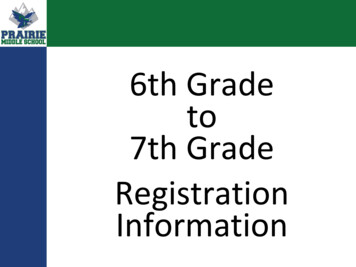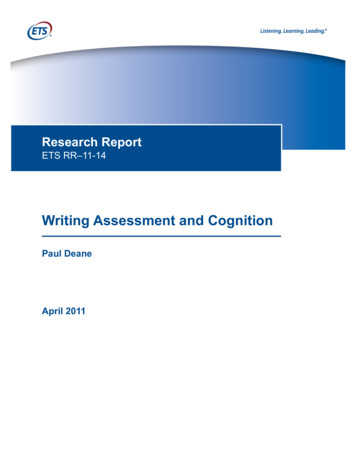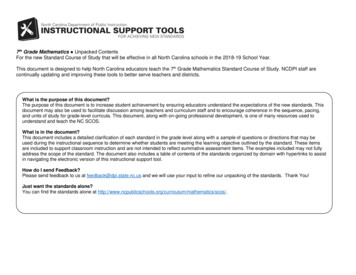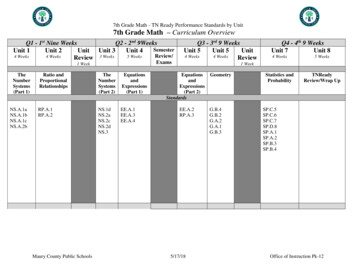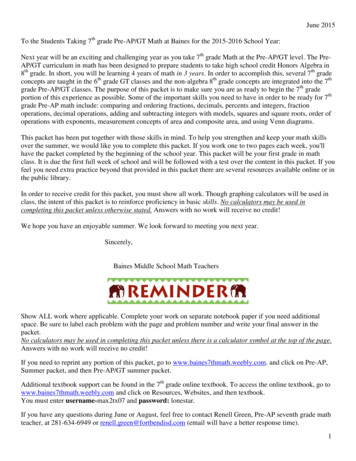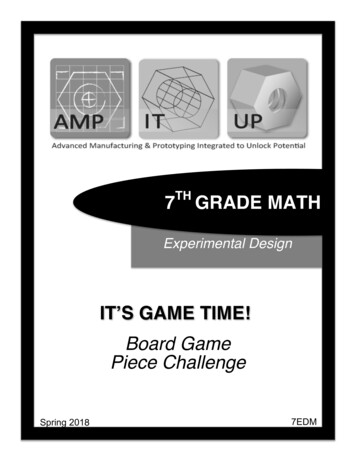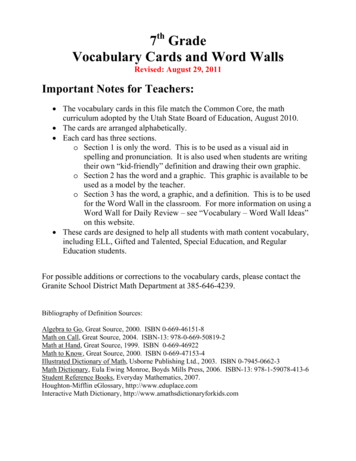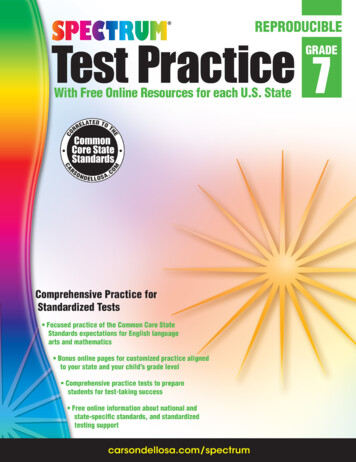
Transcription
thStudy Skills 7 GradeHow to Take Class NotesEducational Talent Search ProgramEastern Kentucky University521 Lancaster Ave. Keith 129Richmond, KY 40475859-622-5425www.ets.eku.edu
Why Take Notes? Within 2 weeks you forget 80% of what you hearWithin 4 weeks you remember only 5% of what you hearOrganized note taking will lead to longer memory and better gradesListening and note taking are two critical classroom survival skills Without listening, taking accurate notes is impossible Without class notes, learning and retention of class materials are greatlyreduced.
Shorthand Develop a “personal shorthand method”Note taking is a life long skillWhen do adults take notes?Look over notes from a recent classMake a list of words that have been repeated several timesDecide upon a symbol or abbreviation for each word Similar to texting Examples of shorthand b/c becausew/ withw/o withoutcont. continue and less thangovt governmentb/f beforert rightintro introduction greater than? confusing
Show importance by SIZE or underlining the important thoughts!! Write your notes CLEARLY Date each sheet of notes, including subject and source Remember QUOTES, RULES , and LAWS Find the note taking style that is best for you Don’t be afraid to ask .your teacher, other students Learn to use the library Review your notes regularly
IN CLASS Keep Alert Pay Attention Listen for Key words Listen for Clues During discussions, listen for major Conclusions If the teacher writes it on the chalkboard, WRITE ITDown , TOO!! Tune out distractions
Taking Notes from Text Books Look for the Big PictureLook at chapter HeadingsRead summaries at the end of chaptersRead Key PointsHave a sense of Purpose. What do you really want toknow?Make sure you understand the WordsUnderstand what “relationship” is happening?Look for ideas and factsOutline so you can reviewSummarize –find the main pointsRead your notes out loud to yourself
Terms For Taking NotesMatch the following terms with their meaning to check your understanding of key words used to explain 2.13.Active ListeningClarifyDetailsEditHighlightMemory TriggersMain IdeasOrganized NotesParaphrasingPersonal ShorthandPhrasesRaw NotesSubject MatterArrange material according to topic bysubject matter, main idea and detailB. To make clear and fully understandableC. Cue words and phrases placed in the lefthand column to jog memoryD. Think about what is said, picking up on allavailable cues and making some type ofresponseE. Material as taken directly from a lecture tobe rewritten at a later timeF. Main divisions: definitions, results,methods. The topic, are of precise divisionof the subject.G. To organize, categorize and classify; to addor subtract ideas.H. Explicit examples, illustrations or statistics.I. Thought units, not sentences.J. To focus attention on certain points byunderlining or color-coding.K. Generalization. Subject headings and topics.L. To express in your own wordsM. Shortened forms or symbols that aremeaningful to the note-taker
1. D2. B3. H4. G5. J6. C7. K8. A9. L10. M11. I12. E13. F
Activities in Taking Class NotesEvaluate your present note-taking skills by putting a check mark beside each ofthe note-taking hints that you already practice. The put a check mark beside thosesteps that you plan to practice. Leave a space blank if you do not plan to follow aparticular strategy.1. Keep a written record of theclass.2. Sit where the teacher can seeme.3. Read in advance textbookmaterial about the topic to bepresented in class.4. Write notes in outline form asfollows:5. Write examples6. Question the instructor whenan idea is not clearNow DoPlan to Do
Evaluate your present note-taking skills by putting a check mark beside each of the note-taking hints that you already practice. The put a check mark beside those steps that you plan to practice. Leave a space blank if you do not plan to follow a particular strategy. 1. Keep a written record of the class. 2. Sit where the teacher can see me. 3.
